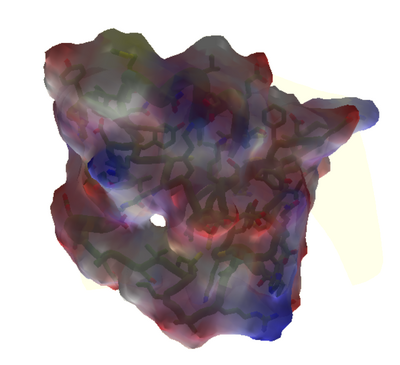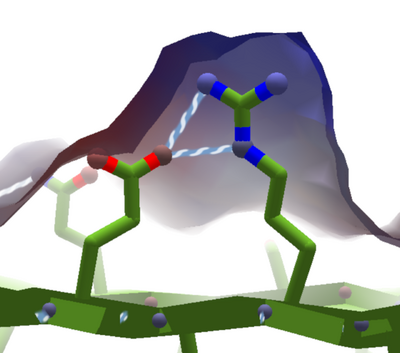
Isosurface revealed by Show Isosurface view option.
The isosurface of a protein represents the part of the protein that water can reach, also known as the accessible surface area. The coloring shows the protein's electric potential.
In Foldit, the isosurface can be displayed using the "Show Isosurface" view option. (The advanced GUI option is required.)

Isosurface partially cut away to show glutamate hydrogen bonded to arginine. The isosurface is colored blue near where the arginine has a positive charge, and red near the glutamate's negative charge.
The Foldit isosurface is a translucent cloud colored in shades of red and blue which shows the electrostatic potential of the protein (see also). The blue areas means the surface is more positive, and the red areas mean the surface is more negative.
Uses[]
The isosurface can also help to reveal problems with a protein's core. Any holes in the isosurface mean water could reach the hydrophobic core of the protein. Rearranging the protein to close the holes should tend to improve the protein's score.
The isosurface can also be used to help determine how multiple protein units fit together, for example in a symmetry puzzle.
Limitations[]
The Show Isosurface option has some limitations. In electron density puzzles, Show Isosurface has no effect, presumably because it would interfere with the display of the electron density cloud.
When the protein is displayed as an extended chain, the isosurface covers only a portion of the protein. (The isosurface is not really useful on an extended chain anyway.)
On larger puzzles, Show Isosurface may have no effect. This may be an effort to prevent crashes reported when displaying the isosurface on certain puzzles.